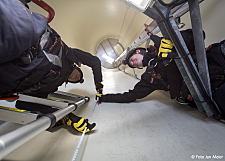
The Application Center for Wind Energy Field Measurements (AWF) is a joint venture between Fraunhofer IWES Nordwest and fk-wind: of Bremerhaven University. It measures wind turbines in operation as a partner for research and development projects. In this way, the Application Center is responding to the growing demand for high-quality processes to measure, analyse and optimise existing installations and prototypes in the field. NEXT

The Bremen Fibre Institute (FIBRE) will open a second facility in the new EcoMaT lightweight construction centre in the Airport City.As a major scientific player in the EcoMaT, the Bremen Fibre Institute (FIBRE) is planning to develop its expertise in the field of fibre-reinforced composites, to make it available to all its partners, and thus to generate its own growth. NEXT
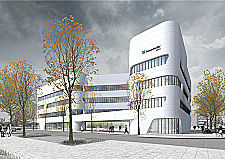
The Fraunhofer Institute for Medical Image Computing MEVIS in Bremen does research and development work in the field of software development for computer-assisted medicine, bringing together medical imaging, image-assisted therapy and medical computer science. Working and interacting closely with healthcare professionals, Fraunhofer MEVIS is developing IT-based systems for the diagnosis and treatment of diseases of the breast, liver and lung, the brain, the cardiovascular system, and cancers. NEXT
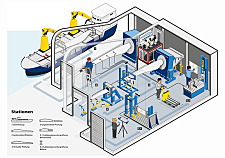
The Fraunhofer Institute for Wind Energy Systems Bremerhaven (IWES) combines the expertise of its staff with a comprehensive testing infrastructure unmatched anywhere in the world. Since 2011, the research institute has been operating two rotor blade test rigs for blades of up to 70 metres and up to 90 metres in length. Despite the great successes and the global recognition enjoyed by IWES’s methods to test entire blades – including tests of two of the world’s longest rotor blades at more than 80 metres – it is already clear that the current procedure is reaching its limits as blade lengths continue to increase. NEXT
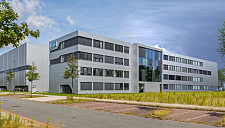
The German Research Center for Artificial Intelligence (DFKI) is responding to the growth at its Bremen site and is massively upgrading its research and test infrastructure. This is resulting in a platform for human-machine cooperation, space and underwater robotics, and embedded systems with a unique European experimentation environment. The DFKI’s new building, which was completed at the end of 2013, is to be enlarged for this purpose in a second construction phase in order to provide the space needed for project rooms, workshops, test areas and experimental environments. In future, pioneering work is to take place here in the fields of cyber-physical systems, verification of embedded systems, aerospace, assistance and rehabilitation systems, adaptive production and agricultural robotics in cooperation with innovative, high-performing companies. NEXT
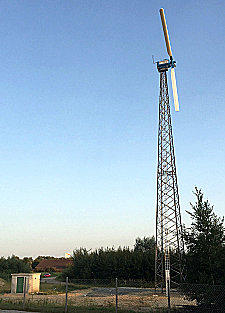
High-performance electronics is increasingly becoming a key technology for the energy transition. Almost all multi-megawatt wind energy installations are connected to the grid via high-performance electronics. This technology is crucial for the integration of wind energy into the grid and for transporting the electricity generated across large distances. NEXT

The process of digitisation is impacting the aerospace industry in Bremen. In the German Aerospace Center’s Virtual Product House (VPH), the industrial and research communities want to work together on digital aircraft development so that computer simulations can significantly accelerate the development and approval of future aircraft. NEXT
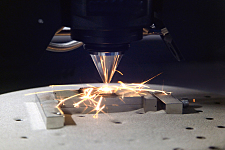
The infrastructure at the EcoMaT material research centre is being enhanced by a new test facility for additive manufacturing (3D printing). Additive manufacturing is a key aspect of the work done by EcoMaT in the Airport City. NEXT

Bremen’s Leibniz Institute for Materials Engineering – IWT is in great demand as a partner for the development of additive manufacturing technologies and is receiving €720,000 in funding from 2014 to 2020 under the ERDF programme. Half of the amount is being provided by the State of Bremen, and half by the EU. NEXT

H. Marahrens Schilderwerk, Siebdruck, Stempel GmbH is planning the development of two entirely new concepts. NEXT
Working together with Bremen City University of Applied Sciences, ProVentecs is developing an automated manufacturing process to make prototypes of a filter heat exchanger with particularly small distances between the plates. NEXT
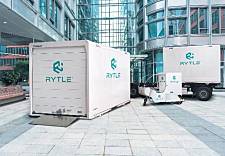
The main focus of the research project headed by Bremerhaven University of Applied Sciences – together with the partners Rytle GmbH and Weser Eilboten GmbH – is the development and piloted application of a novel and sustainable last-mile logistics system based on a crowd logistics approach in which student drivers are allocated on demand to transport assignments at peak periods. NEXT

A reliable electricity supply is of crucial importance for an economy, and in view of the continuing rise in its overall generation capacity, wind energy must also play its part in this, offering all the necessary qualities. NEXT

The aim of the project entitled Cluster Excellence 2020 is to expand and raise the networking activities of the Wind Energy Sector Network (WAB e. V.) to a level of excellence so that the north-west can position itself permanently as a leading international onshore and offshore wind energy cluster. NEXT
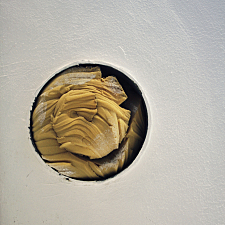
The laboratories of Dr. Döring GmbH want to use this project to develop a simple pre-test which can provide immediate information about the hexabromocyclododecane (HBCD or HBCDD) content in insulating material. NEXT
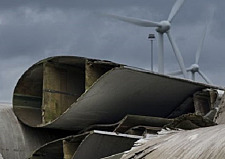
Thousands of wind turbines will be taken out of commission in the coming years. If no action is taken, the energy transition’s big hope could become a problem. The millions of tonnes of concrete, steel and aluminium can be returned to use via the recycling systems already in place. However, it is more difficult to recycle the rotor blades. There is a lack of transparency about the material flows, and the materials involved – e.g. carbon fibre-reinforced plastics – create difficulties. NEXT
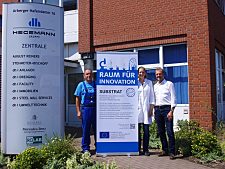
The new research project entitled Production of topsoil-equivalent soil substrate from aquatic sediments using innovative process technology by DETLEF HEGEMANN Umwelttechnik GmbH was launched in April 2018. The project aims to develop new ways to make use of aquatic sediments and other municipal waste. NEXT
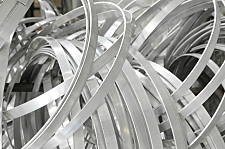
In the MultiPulse project, a test facility is being built to generate multipulses. This test facility is to serve as the basis for a subsequent research project. The project is being run by Bremen University and its partner, ZARM Technik AG. NEXT

In order to determine the presence of formaldehyde in the air, an online monitoring system with a spectrally tunable DFB laser is to be developed, validated and established in a project run jointly by Bremen University and the Bremen Environmental Institute. NEXT
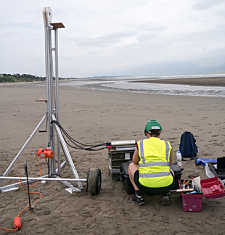
Fielax GmbH in Bremerhaven is working with the Institute for Statistics of Bremen University to develop a model to determine safe dimensions for offshore undersea cables. The correct design of the dimensions of the cables mitigates the impact of the temperature on the sediment and reduces resource consumption. The project aims to produce a statistical model of the components of the sediment cable temperature model and to arrive at a confidence interval (margin of error) for the cable temperature in real operational conditions. NEXT
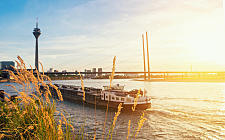
In this project, ScanDiesel GmbH is developing a new engine for use by vessels on inland waterways by redesigning a prototype industrial engine and adapting it for use on waterways whilst complying with the new Stage V and the Inland Waterways Vessels (Surveys and Certification) Regulations. Marinisation describes the process of modifying a (diesel) engine so that it can be used on board a vessel. NEXT
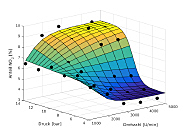
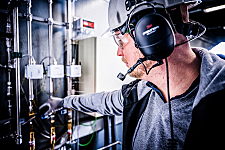
The funding project entitled Power Induced Catalytic Combuster, or PICC, aims to implement a technical product development of a catalytic reactor to use low-calorific gases (gases with a low methane content) to generate energy. NEXT
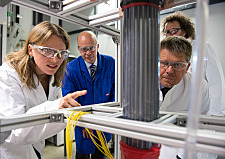
How can commercially strategic metals and metal compounds be physically separated from dusts in the circular economy? This question is being addressed by Bremen University and its partner Ventimola GmbH & Co. Dämmtechnik KG in an ongoing project. The aim is to demonstrate both technical and commercial feasibility via a case study. NEXT
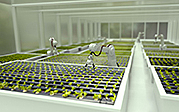
The aim of the GreenAI PFAU funding project being carried out jointly by Bio Science GmbH and Bremen University’s Institute of Automation Technology (IAT) is to develop and successfully integrate robots to handle cuttings-based plant production. NEXT

This research project, implemented by Bremen University with its partners LASE Industrielle Lasertechnik GmbH and Deutsche WindGuard Engineering GmbH, aims to develop an optical geometry technique to measure and analyse the condition of wind turbine rotor blades. NEXT
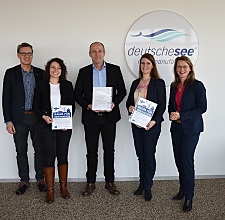
The quality fish processor Deutsche See GmbH, one of the largest food companies in Bremerhaven, still makes its delicacies by hand. NEXT
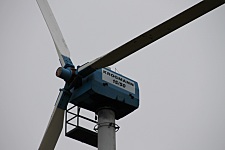
This project is designed to develop and implement a digital twin for a wind turbine which will enable an overarching sharing of plant-specific information for various application scenarios.The twin provides various user groups with a virtual wind turbine which is capable of mapping the current status of the physical installation and producing information of specific relevance. NEXT

Jacobs University Bremen is collaborating with the Bremerhaven-based research-oriented company Kaesler Nutrition GmbH on a project to optimise feed in aquaculture. NEXT
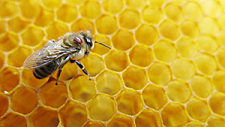
The varroa mite is a major threat to bee colonies. It nests in both the brood and the adult bees, weakening the growth of the larvae and the bees’ immune system. Almost 100 per cent of colonies in Germany are affected. The nation-wide annual loss of colonies can reach 25 per cent. NEXT

This project aims to develop an innovative detection system to identify and quantify mould pollution in indoor air. NEXT
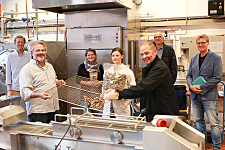
How can waste heat from the manufacture of tiles be used to dry fish? Scientists at Bremerhaven University of Applied Sciences have started working on this question. NEXT

The processing of tuna is a sophisticated business – particularly the defrosting process. NEXT
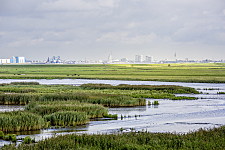
Climate change is resulting in extreme weather events. In addition to sudden bouts of high rainfall, there are also more and more very long periods without rain. This is making it even more important for the water management sector to have reliable and readily available drainage technology. This both serves land management and is a key aspect of protecting the population. NEXT
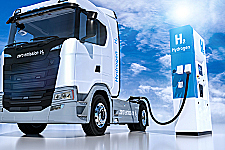
Many people have identified heavy goods vehicles with hydrogen-powered electric engines as a forward-looking solution. However, as of today, no such vehicles are on the market, and no-one knows in what conditions this driveline will be more advantageous than battery-powered cars. NEXT
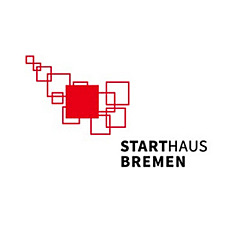
From now on, all business start-up services will be brought together under one roof as a one-stop agency in the new Bremen Starthouse. The services include the former B.E.G.IN coordination agency, the BRUT programme and the financing and equity services which are now being offered under the umbrella of the BAB and supported by ERDF Bremen. NEXT
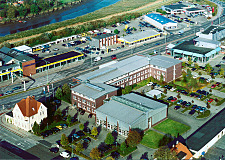
Creating ideal start-up conditions for small and medium-sized companies in the initial phase, offering organisational, commercial and technological assistance, acquiring new commercially viable start-up projects, renting out office and production space – these have been the main tasks of the Bremerhaven Innovation and Start-up Centre (BRIG) since 1990. NEXT
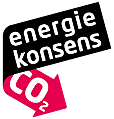
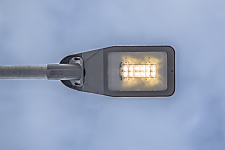
The street lighting in the fishing port is being modernised. Old mercury vapour lamps are being replaced by low-energy LED lights. This measure will not only vastly cut electricity costs, but will also help to mitigate climate change. NEXT
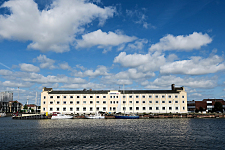
The Gröpelingen neighbourhood initiative consists of two partners: Gröpelingen Marketing e.V. and Kultur vor Ort e.V. The two initiatives are tasked with integrating the local economy with the neighbourhood culture. In addition to their existing responsibilities of neighbourhood networking and promotion, as well as event promotion, the two associations started providing advice to SMEs in early 2015. NEXT
In the heart of Lehe, the Old Town of the Maritime Town, a contact and coordination office was opened in mid-2014 in response to demand. The intention is to counter the deterioration in the image of the neighbourhood and to engender a positive development. NEXT

Alte Bürger street in the Mitte-Nord area of Bremerhaven stands for culture and entertainment, living and working. The wide-ranging activities of the Alte Bürger neighbourhood centre achieved a lot of positive things in the previous programming period. NEXT

A new school building with a canteen, sports hall, playhouse and landscaping is being erected in Gröpelingen. ERDF funding is going towards the sports hall. NEXT
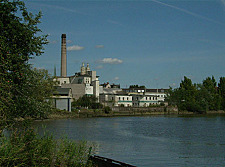
The Kistner site in Lehe has been vacant at least since 2005, when the H. F. Kistner construction company went bankrupt. Roughly 4.2 hectares in size, the site’s central waterside location, its accessibility and the attractive landscape mean that it offers excellent prospects for development. The site between Hafenstraße and the Geeste is now to be revitalised. With a blend of local services, retail outlets, housing and culture, a new, attractive centre is to be created in Lehe. NEXT
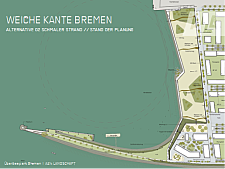
The citizens of Bremen will soon be able to enjoy a waterside view at a beach at the turning bay, the north-west end of Überseestadt. Today’s ugly pile of stones and rocks is to be transformed into a new leisure and relaxation area for Überseestadt and the neighbouring areas of Gröpelingen and Walle. NEXT
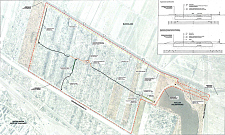
As part of the Local Bremen West leisure park – In den Wischen circular trail project, wasteland is to be transformed into woodland, shrubberies, orchards and aquatic biotopes in the next few years. NEXT
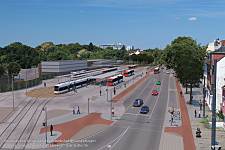
There’s plenty going on around Gröpelingen’s depot: nearly 24,000 passengers pass through here every day. Around them, the cars drive along Gröpelinger Heerstraße and Stapelfeldtstraße en route to and from the city. NEXT
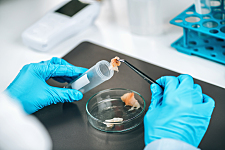
Development of economically sustainable media components for the optimal growth of cell cultures for in-vitro fish meat NEXT
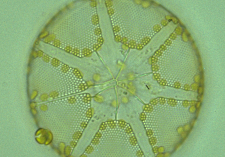
At present, the construction sector generates around 11 per cent of global carbon emissions each year – not least due to the energy-intensive production of concrete. The BEA research project is being launched in Bremerhaven, with the aim of transforming future house-building and building services engineering. The intention is to use regenerative natural materials in buildings in order to conserve resources and in particular to cut carbon emissions. NEXT
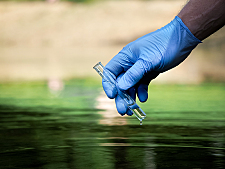
The project aims to develop, validate and establish a decentralised pre-cleaning of complex wastewater flows from health facilities. NEXT
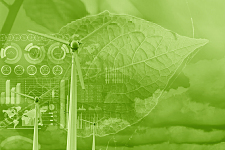
The IWAS project aims to display the benefits of a fully climate-neutral supply to the Lune Delta neighbourhood in combination with a wind turbine. NEXT
The innovative project of the partners ZARM Technik AG, Heino Ilsemann GmbH and the Bremen Fibre Institute aims to develop the carbon-fibre reinforced plastic housing concept which emerged from the AKIRA project into a housing which is suitable and optimised for the serial manufacturing of magnetic torquers. NEXT